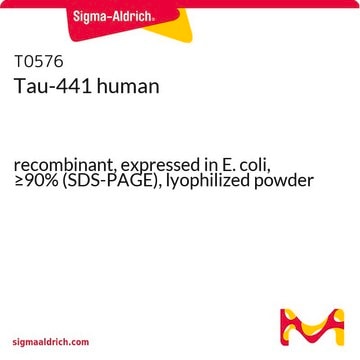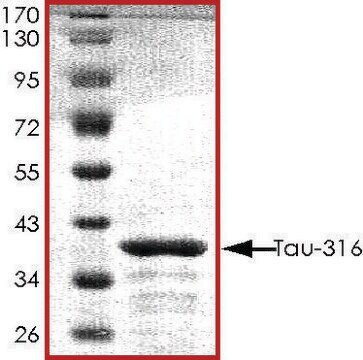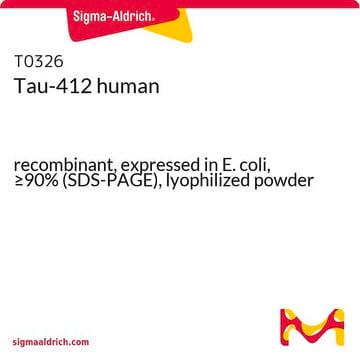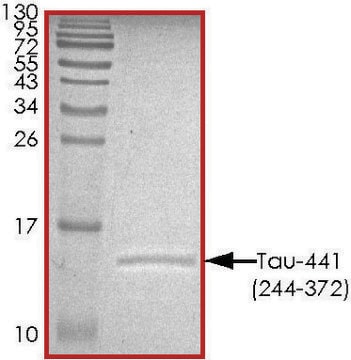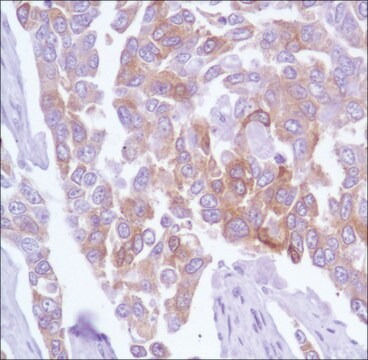T7951
Tau Protein Ladder, 6 isoforms
recombinant, expressed in E. coli, ≥90% (SDS-PAGE), buffered aqueous glycerol solution
Synonyme(s) :
Tau Protein Ladder
About This Item
Produits recommandés
Source biologique
human
Niveau de qualité
Produit recombinant
expressed in E. coli
Pureté
≥90% (SDS-PAGE)
Forme
buffered aqueous glycerol solution
Poids mol.
36800
39700
40000
42600
42900
45900
Composition
dodecyl sulphate sodium salt, 1-5%
glycerine, 20-30%
mercaptoethanol, 10-20%
Technique(s)
immunoelectrophoresis: 10-20 μL using recombinant Tau protein marker
western blot: 2-5 μL using recombinant Tau protein marker
Numéro d'accès UniProt
Conditions d'expédition
dry ice
Température de stockage
−20°C
Informations sur le gène
human ... MAPT(4137)
Description générale
Tau gene, spanning 100 kb with 16 exons, is mapped to human chromosome 17q21. The six alternative splice variants of protein ranging in size from 352-441 amino acids have been identified in human adult brain. Tau is a member of the microtubule-associated protein (MAP) family. It is predominantly expressed in neurons.
Application
Actions biochimiques/physiologiques
Conditionnement
Caractéristiques
Forme physique
Stockage et stabilité
to qualified or authorized persons
Anticorps
Produit(s) apparenté(s)
Mention d'avertissement
Danger
Mentions de danger
Classification des risques
Acute Tox. 3 Dermal - Acute Tox. 4 Oral - Aquatic Chronic 3 - Eye Dam. 1 - Repr. 2 - Skin Irrit. 2 - Skin Sens. 1 - STOT RE 2 Oral
Organes cibles
Liver,Heart
Code de la classe de stockage
6.1C - Combustible acute toxic Cat.3 / toxic compounds or compounds which causing chronic effects
Classe de danger pour l'eau (WGK)
WGK 3
Certificats d'analyse (COA)
Recherchez un Certificats d'analyse (COA) en saisissant le numéro de lot du produit. Les numéros de lot figurent sur l'étiquette du produit après les mots "Lot" ou "Batch".
Déjà en possession de ce produit ?
Retrouvez la documentation relative aux produits que vous avez récemment achetés dans la Bibliothèque de documents.
Les clients ont également consulté
Notre équipe de scientifiques dispose d'une expérience dans tous les secteurs de la recherche, notamment en sciences de la vie, science des matériaux, synthèse chimique, chromatographie, analyse et dans de nombreux autres domaines..
Contacter notre Service technique